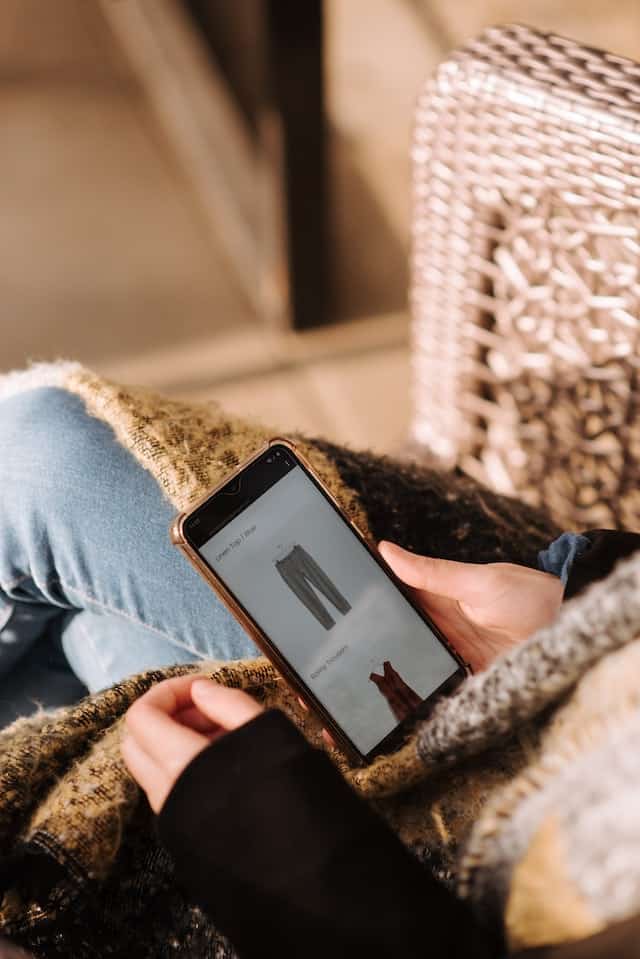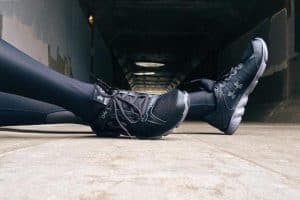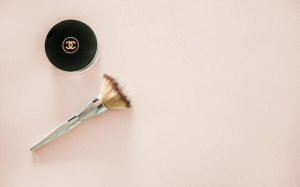The fashion industry has seen huge changes in the last decade, with the explosion of e-commerce and the entry of tech giants like Amazon into the scene. With such massive competition in the industry, it’s important to look at which companies are doing well and which are falling behind. There are hundreds of marketplaces in the fashion industry, but not all offer their users the best shopping experience. Several criteria make a marketplace attractive, including shipping speed and customer service, but they must be creative to stand out in an overcrowded marketplace. Check out these top five fashion marketplaces to find out which marketplaces shine.
The top fashion marketplaces highlighted in this article include:
- Shein
- Depop
- Zara
- Inditex
- H&M
Let’s dive right in!
Shein
Shein is a fast and popular Chinese e-commerce website selling trendy clothes. Chris Xu started the company in Nanjing, China, in 2008. In the industry, this brand name is synonymous with low prices. Many thought of Shein more as a drop shipping company than a traditional retailer. This company does not engage in the design or production of clothing at this time; rather, it sources its goods from the Guangzhou clothing wholesale market. Apptopia reports that in the first half of 2022, there were 22.4 million downloads of the Shein app, compared to 22 million downloads of the Amazon app in the United States. This was the first time Shein exceeded Amazon in the United States.
Key Statistics
Shein went from worth $15 billion in 2020 to $30 billion in 2021. The corporation reportedly achieved $10 billion in sales during the pandemic of 2020, marking the seventh year in a row of above 100% sales growth. As of October 2020, Shein was the largest online fashion retailer. It has become the largest fast-fashion company as of May 2022. Shein had cornered 28% of the US quick fashion market by April 2022, when it had also raised between $1 billion and $2 billion in private capital. Before that year, a poll of 7,000 American adolescents placed Shein in second place for best online shopping destination. The company has 43.7 million monthly users per month.
Shein History
In 2008, Chinese entrepreneur and SEO marketing expert Chris Xu launched a company initially known as Shein. The company sourced its goods from the wholesale apparel market in Guangzhou, the logistical heart of the Chinese garment industry. Shein was not involved in any way with developing or manufacturing these outfits. It operated, however, much like a drop shipping company, which often uses wholesalers to ship products directly to international buyers. The company started social media marketing in 2012, teaming up with style bloggers to host prizes and promote products on social media platforms, including Facebook, Instagram, and Pinterest. Having completed the acquisition of Romwe, a Chinese e-commerce store, in 2014, Shein is now considered a “fully integrated retailer.” In 2015, the company rebranded from “Sheinside” to just “Shein,” citing the necessity for a name that was easier to remember and locate online as the reason for the switch. In 2016, Xu had amassed an 800-strong design and prototype team that produced garments under the Shein label. However, Shein has also launched a series of pop-up stores for those who would rather not shop online. The fact that Shein was one of the first major retailers to use the video-sharing app TikTok to promote trending products only added to the company’s success.
Depop
Depop is an app that allows you to buy and sell vintage clothing and accessories. It’s perfect for those who love to shop for new styles but can’t afford the high prices in stores. Depop has various products from different sellers worldwide, so you’ll never run out of things to look at. The app is also really easy to use- just download it on your phone and start browsing! Depop is headquartered in London, United Kingdom, but other Depop locations are in Manchester, Milan, Los Angeles, and New York City. In addition to its established foothold in the American and British markets, the company is now gaining traction in Australia and New Zealand.
Key Statistics
Both revenue and GMSV (gross merchandise sales) for Depop increased by a factor of two in 2020, reaching $70 million and $650 million, respectively. Depop saw a drop in sales to $55 million in 2021. Depop has a membership base of more than 30 million users. Over thirty-five million people have downloaded the Depop app. And there are currently 3.3 million buyers and 1.8 million sellers on the market.
Depop History
Founder Simon Beckerman started Depop in the Italian business and technology incubator H-Farm in 2011. Seed money was invested in the platform in 2012 by people, including Paolo Barberis and Nana Bianca. In 2012, the company relocated its headquarters to London. Depop established new headquarters in Milan and New York during its rapid growth. Beckerman hired Faroeseman Runar Reistrup as its new CEO and received €1 million from Red Circle Investment in October 2013. Depop received an additional $8 million in funding from Balderton Capital and Holtzbrinck Ventures in 2015. Depop has the largest population of users in the United Kingdom, Australia, the United States, and Italy. In March 2016, Depop’s then-CEO, Runar Reistrup, credited positive word of mouth for the company’s rapid expansion. In 2016, Depop sponsored the Vans Warped Tour as the official mobile application. Depop received $62 million in Series C funding from General Atlantic in the month of June 2019. In addition to HV Holtzbrinck Ventures, Balderton Capital, Creandum, Octopus Ventures, TempoCap, and Sebastian Siemiatkowski, the round included previous investors. Depop’s revenue and merchandise sales more than doubled in 2020, reaching $70 million and $650 million. Despite being Etsy’s priciest acquisition at $1.6 billion in cash, Depop will continue to operate as a separate brand, as was announced in June 2021.
Zara
One of the most well-known names in the fashion sector is the Spanish multinational retail clothing company ZARA. They carry various fast fashion items, including apparel, footwear, and fragrances. Arteixo, located in A Corua, Galicia, is home to the company’s headquarters. It’s the main company in the Inditex conglomerate. By 2020, they had increased their annual product rollout to over twenty.
Key Statistics
More than 70 million people visit Zara’s website monthly. With over 2200 locations in 88 countries, Zara generated €19.586 billion in sales in 2021. There are a total of clothing and home decor stores under the Zara umbrella. There are 334 Zara Home stores in Europe showcasing this brand. As of 2022, there are 321 Zara clothes stores and 56 Zara Home stores in the Americas. Zara operates 524 normal apparel stores in Asia and elsewhere and 117 Zara Home locations.
Zara History
In 1985, a store was established in Porto, Portugal; this marked the company’s first foray outside of Spain. The corporation first expanded to the United States in 1989 and then to France the following year. Zara grew internationally in the 1990s, opening stores in new countries like Mexico and Belgium as well as in Asia, Australia, and Morocco. In 2014, Zara started implementing RFID technology in its retail locations. Security tags with RFID chips are separable and reusable, meaning they can be used on multiple clothing items. The device can instantly count items in stock by picking up radio signals from RFID tags. A notification is sent to the warehouse as soon as a product sells, where more of the same item can be quickly restocked. If an item is missing from a shelf but has an RFID tag, it may be located quickly and simply. Among the greatest worldwide brands, Interbrand placed Zara at #30 in 2015. As 2019 began, Zara introduced a new logo. The French design studio Baron & Baron is responsible for it. According to MDS, a global publication covering the fashion industry, Zara’s sales increased by 2.17% in 2019 despite a worldwide decline in the textile industry of 2.38%. For 2019, the company’s CEO, Lars Persson, announced that the brand would wait until worldwide rents were more reasonable before continuing its expansion. This brand intended to reduce the number of European stores by 2020.
Inditex
Spanish apparel conglomerate Industria de Diseo Textil, S.A. has its headquarters in Arteixo, Galicia. Over 7,200 of Inditex’s outlets can be found in 93 different countries, making it the largest fast-fashion retailer in the world. The Zara Group owns several other retail chains besides its namesake Zara shop. These include Zara Home, Pull&Bear, Oysho, Massimo Dutti, Stradivarius, Uterqüe, Bershka, and Lefties. Most of its retail locations are owned by the company itself, while franchises are granted mostly in nations that prohibit the foreign ownership of corporations.
Inditex Key Statistics
The decline in retail sales caused by the coronavirus pandemic accounted for 18% of the decline in Inditex’s revenue to $1.85 billion in the fourth quarter of 2020. Inditex’s share price dropped by 12 percent last year. As of October 2022, the firm’s 7292 outlets and over 162,000 workers were thriving.
History
Early in his career, Amancio Ortega began working at a shirt manufacturer in A Corua, Spain. Ortega and his wife, Rosalia Mera, created a clothing company out of their house and began producing their own designs. With his saved money, Amancio opened a tiny business and began selling clothing to his previous employer. Zara, which sold affordable versions of trendy clothing, was founded by a couple in 1975. Zara became a legally recognized company in Spain the following year, at which time it also expanded its footprint there with new retail locations and manufacturing facilities. Later that year, when Ortega saw how crucial computers were becoming, he engaged a local professor named José Mara Castellano to increase the business’s computing capacity. The corporation adopted a new design and distribution strategy in the 1980s that slashed lead times from concept to shelf. Castellano, who took over as CEO in 1984, was also responsible for developing the system. In 1985, a holding company called Industria de Diseo Textil S.A., or Inditex, was established to manage Zara and its factories. The first international Zara store was established in 1988 in Porto, Portugal, marking the beginning of the company’s international expansion. Its own footwear line, Tempe, debuted in 1990 and quickly became a staple in the juniors’ departments of Zara boutiques. Inditex founded the relaxed menswear brand Pull and Bear in 1991. By the end of the year, the business had also purchased a 65% stake in the posh Massimo Dutti label. Lefties, a spinoff of Inditex that sells previously owned Zara merchandise, got its name from the phrase “leftovers” and was launched in 1993. After acquiring the remaining Massimo Dutti shares in 1995, Inditex began developing the Massimo Dutti brand for ladies. Inditex pitched their Bershka label for the urban cool crowd in 1998. In 1999, the firm acquired the trendy label Stradivarius for young women. Inditex made its debut on the Bolsa de Madrid stock exchange in 2001 with an initial public offering (IPO). As a result of the IPO, public investors now own 26% of the company at a €9 billion valuation. The same year, the business founded the lingerie and women’s clothing store Oysho. Inditex introduced the Zara House brand in 2003. It sells items for the home, including linens, tableware, and decorative accents. When the 2,000th Inditex store opened in Hong Kong in 2004, the company was already well-established in 56 nations worldwide. The company’s previous chief executive officer, Jose Maria Castellano, handed off expansion ambitions to Pablo Isla in 2005 before stepping down. Uterque, a women’s accessories label created by Inditex, debuted that year. During that same year, after tripling in size over the previous four years, the company launched its 4,000th store in Tokyo. Since Ortega, the company’s founder, and largest stakeholder, stepped down as deputy chairman in 2011, CEO Isla has been in charge of day-to-day operations. By the end of that year, the company had opened a store in Australia, expanding its reach to all seventy-seven countries across five continents. Inditex was one of 38 corporations to join the Accord on Factory and Building Safety in Bangladesh following the 2013 Savar building collapse.
Extra- H&M
The H&M Group, also known as Hennes & Mauritz AB, is a Swedish international fashion and apparel company that carries a vast assortment of men’s and women’s garments, accessories, shoes, and children’s wear, among other things. H&M was established in 1947 and has expanded rapidly, becoming the world’s second-largest fashion retailer, behind only Inditex (who also owns the Zara chain of stores).
Other top fashion marketplaces include:
- Amazon
- Nike
- AliExpress
- Zalando
- FarFetch
The Bottom Line
There are thousands of fashion websites and marketplaces, so knowing where to start can be difficult if you aren’t sure where to look. Different websites cater to different audiences depending on your location, size, or budget to make matters even more complicated. If you don’t know what you’re looking for, it’s hard to figure out where to begin the search process and filter through all the information. However, you can get started with the list we’ve compiled above.







